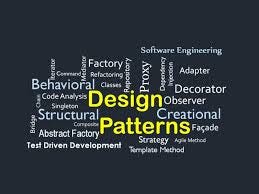Understanding the Adapter Design Pattern in C#

The Adapter design pattern is a structural pattern used to allow incompatible interfaces to work together. It acts as a bridge between two incompatible interfaces, enabling them to communicate and interact. The pattern is particularly useful when integrating legacy systems or third-party libraries with a new system that has different interfaces.
Understanding the Bridge Design Pattern in C#
Example Without the Adapter Pattern
Let's consider a scenario where we have an existing class LegacyPrinter that prints documents and a new interface IPrinter that the new system expects. Without the Adapter pattern, the LegacyPrinter cannot be used directly because it doesn't implement the IPrinter interface.
using System;
namespace WithoutAdapterPattern
{
// Legacy class that needs to be adapted
class LegacyPrinter
{
public void PrintDocument(string document)
{
Console.WriteLine("Printing document using legacy printer: " + document);
}
}
// New system's expected interface
interface IPrinter
{
void Print(string document);
}
// Client code that expects IPrinter
class DocumentEditor
{
private readonly IPrinter _printer;
public DocumentEditor(IPrinter printer)
{
_printer = printer;
}
public void PrintDocument(string document)
{
_printer.Print(document);
}
}
// Main Program
class Program
{
static void Main(string[] args)
{
LegacyPrinter legacyPrinter = new LegacyPrinter();
// Cannot use legacyPrinter directly because it does not implement IPrinter
// DocumentEditor editor = new DocumentEditor(legacyPrinter); // Error
}
}
}
Problems in the Non-Pattern Approach
Incompatibility: The
LegacyPrinterclass cannot be used directly with theDocumentEditorclass because it doesn't implement theIPrinterinterface.Tight Coupling: Without the Adapter pattern, modifying the existing system to work with the new interface can result in tight coupling and potential code changes throughout the system.
Lack of Flexibility: The system lacks flexibility in integrating new or existing components with different interfaces.
How the Adapter Pattern Solves These Problems
The Adapter pattern creates an adapter class that implements the interface expected by the client and translates calls to the existing component's interface. This enables the client to use the existing component without modification.
Revisited Code with Adapter Pattern
Let's implement the Adapter pattern by creating an adapter class PrinterAdapter that implements the IPrinter interface and uses an instance of LegacyPrinter.
using System;
namespace AdapterPattern
{
// Legacy class that needs to be adapted
class LegacyPrinter
{
public void PrintDocument(string document)
{
Console.WriteLine("Printing document using legacy printer: " + document);
}
}
// New system's expected interface
interface IPrinter
{
void Print(string document);
}
// Adapter class that adapts LegacyPrinter to the IPrinter interface
class PrinterAdapter : IPrinter
{
private readonly LegacyPrinter _legacyPrinter;
public PrinterAdapter(LegacyPrinter legacyPrinter)
{
_legacyPrinter = legacyPrinter;
}
public void Print(string document)
{
_legacyPrinter.PrintDocument(document);
}
}
// Client code that expects IPrinter
class DocumentEditor
{
private readonly IPrinter _printer;
public DocumentEditor(IPrinter printer)
{
_printer = printer;
}
public void PrintDocument(string document)
{
_printer.Print(document);
}
}
// Main Program
class Program
{
static void Main(string[] args)
{
LegacyPrinter legacyPrinter = new LegacyPrinter();
IPrinter adapter = new PrinterAdapter(legacyPrinter);
DocumentEditor editor = new DocumentEditor(adapter);
editor.PrintDocument("Adapter Pattern Example Document");
}
}
}
Benefits of the Adapter Pattern
Compatibility: The Adapter pattern allows incompatible interfaces to work together seamlessly.
Flexibility: It enables integrating new or existing components with different interfaces without modifying the client code.
Single Responsibility Principle: The Adapter pattern adheres to the Single Responsibility Principle by separating the conversion logic into a distinct class.
Why Can't We Use Other Design Patterns Instead?
Facade Pattern: The Facade pattern provides a simplified interface to a complex subsystem but does not convert interfaces. It's more about simplifying a complex API.
Bridge Pattern: The Bridge pattern is used to separate abstraction from implementation, allowing them to vary independently. It doesn't focus on converting one interface to another.
Decorator Pattern: The Decorator pattern adds responsibilities to objects dynamically and does not deal with converting incompatible interfaces.
Steps to Identify Use Cases for the Adapter Pattern
Incompatible Interfaces: Identify scenarios where two systems with incompatible interfaces need to work together.
Legacy Systems: Use the Adapter pattern when integrating legacy systems with new systems that expect different interfaces.
Third-Party Libraries: The pattern is also useful when incorporating third-party libraries that don't conform to the expected interface.
The Adapter design pattern is a practical solution for integrating systems with incompatible interfaces. By using an adapter class, it enables seamless communication between different components, promoting flexibility and adherence to design principles. This pattern is particularly useful when dealing with legacy systems or third-party libraries.

